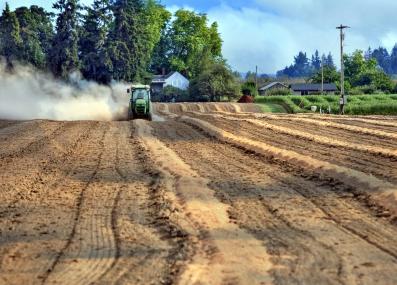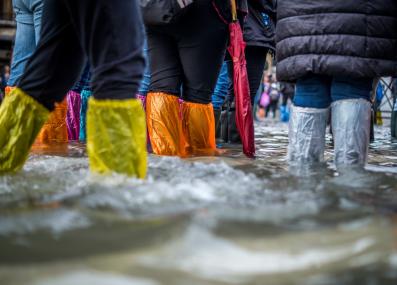New to Climate Change?
Coastal Ecosystems and Climate Change
Coastal ecosystems are the unique habitats formed by plants and other organisms that can thrive at the borders between ocean and land, where they must live in saltwater and changing tides.
Like forests, many of these coastal ecosystems are full of plants that help regulate the Earth’s temperature. As the plants in these ecosystems grow, they pull carbon out of the air and store it in their tissue, roots, and the soil beneath them. This keeps carbon out of our atmosphere, where, as the greenhouse gas carbon dioxide, it would otherwise trap heat and warm the planet.
Carbon storage and coastal protection
Coastal ecosystems are especially good at storing carbon because of the thick, rich layers of soil they build up. In most forests, when trees die, they release their carbon back into the atmosphere. But in many coastal ecosystems, when plants die, they don’t fully break down, and their carbon can stay trapped in water-logged soils for thousands of years. In fact, mangroves store three to five times as much carbon per acre as other tropical forests.1 Coastal wetlands can also store carbon that comes from other ecosystems, by filtering out carbon-rich sediments suspended in river water as it flows out to sea. Because coastal ecosystems are such potent "carbon sinks," the loss of these habitats is an important driver of climate change.
Intact, these coastal habitats are actually one of our best ways to protect coastal communities from climate change. During hurricanes and other storms, high winds can push walls of water toward shore. Coastal habitats absorb energy from incoming waves and slow down these storm surges. As sea levels rise and hurricanes become stronger, we will need this protection more than ever.
Types of coastal ecosystems
Mangrove forests are a type of coastal forest made by mangrove trees, which have waxy leaves and characteristic roots that stick a few feet out of the water. These trees, which survive by filtering the salt out of seawater, form a dense forest along shorelines and tidal rivers. Mangrove forests are found in tropical and subtropical parts of the world, where they provide commercial fishing ground, timber and other economic goods for coastal communities.
Salt marshes are coastal wetlands that are flooded as the tides move in and out. Found mostly in temperate areas and higher latitudes, they are home to salt-tolerant grasses and bushes. Salt marshes provide shelter and breeding grounds for many kinds of fish and shellfish, as well as a resting place for migrating birds.
Seagrass meadows are formed by seagrasses, flowering underwater plants with long, thin leaves. They form a dense mat in shallow waters, with their roots anchoring the sediment beneath them in place. These meadows, which are found all the way from the tropics up to the Arctic Circle, are home to a diverse array of fish and other marine wildlife.
Other coastal ecosystems, like oyster reefs and coral reefs, are formed by animals instead of plants. Like plant-based coastal ecosystems, these reefs help protect the land from powerful storms.
Habitats under threat
While coastal wetlands are a key defense against climate change, these ecosystems are themselves vulnerable to climate change. In theory, coastal wetlands, whose plants can only survive in specific amounts of saltwater, could adapt to rising sea levels by moving inland. But if they’re already on the edge of a steep slope, or a developed area like a road, they have nowhere to go. And in some areas, the rate of sea level rise could outpace wetlands’ ability to build up enough soil to remain above water. More intense storms can also erode the soft soils of salt marshes and seagrass meadows.
These ecosystems face other, more direct threats from humans. As our cities expand, we fill in coastal wetlands to make room for development and farmland. In the tropics, fish farmers cut down mangrove forests for aquaculture ponds. We also harm these ecosystems by dredging deep channels for ships to navigate, and by polluting water with fertilizer, emissions from cars and buses, and other chemicals. And this further feeds climate change: when we destroy coastal ecosystems, their stored carbon gets released into the atmosphere as planet-warming carbon dioxide.
Protecting coastal ecosystems
There is a growing movement to preserve these habitats because of all the benefits they provide us. Conservation groups and others are protecting undeveloped land behind coastal ecosystems to help them adapt to sea level rise. The low-lying Netherlands has started shoring up some of the salt marshes in front of its dykes, to protect this infrastructure, and its citizens, from sea level rise. Some environmental policymakers have also proposed paying coastal landowners for the carbon stored in these ecosystems to prevent their destruction.
Published April 15, 2021.
1 Donato, Daniel C., et al. “Mangroves among the most carbon-rich forests in the tropics.” Nature Geoscience 4, 3 Apr. 2011. doi:10.1038/ngeo1123










